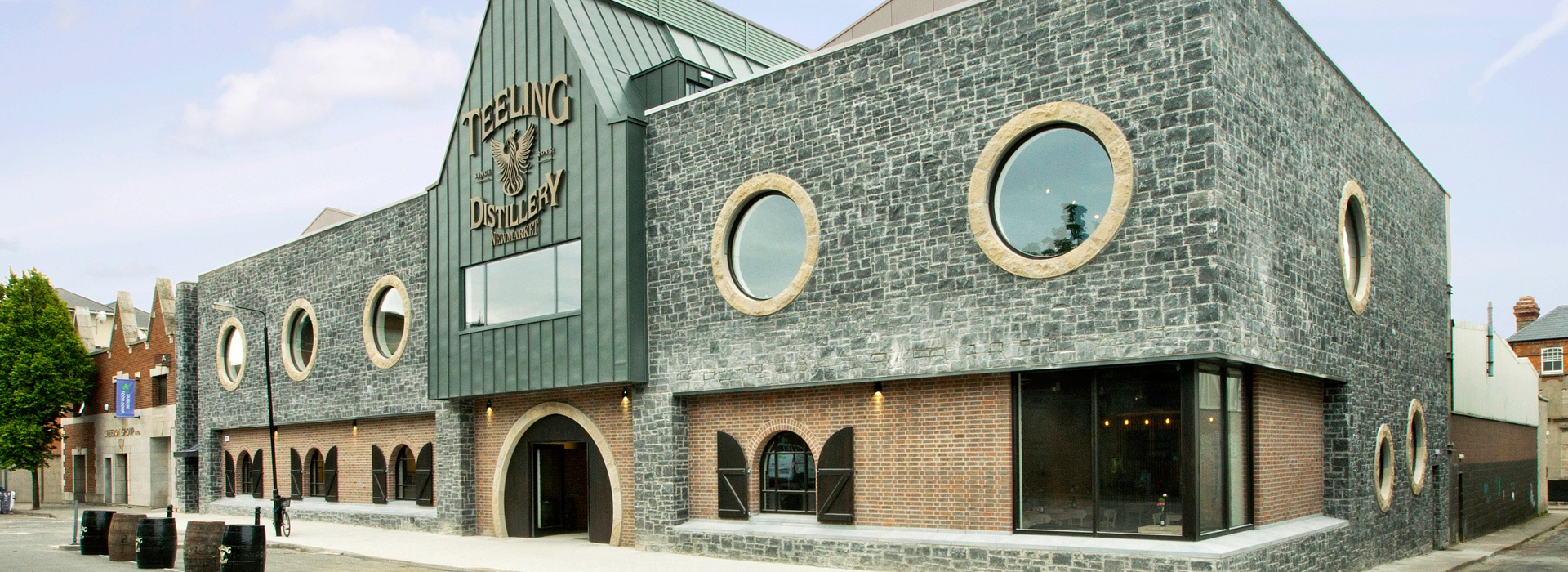It’s been a long time since the reputation of Irish whiskey carried any kind of weight beyond that of a few big names. Jameson and Bushmills seem to have a stranglehold on the industry and while it’s true we’ve had a few new names pop up here and there, a true Irish craft whiskey (to borrow some terminology), is hard to come by. But not to0 far out of living memory, Irish whiskey was an alcoholic juggernaut. Roughly a century ago, Irish whiskey made up 60% of global spirit sales and was the most popular alcohol in the world, with the best of that whiskey coming from Dublin. Now, it’s down to about 1%, for more than a hundred years, there were no new distilleries in Dublin.
But it’s not going to stay that way. There are small indications in Ireland that something akin to the craft beer renaissance is in store for whiskey. Just as craft breweries did both in the US and in Ireland, small distilleries are emerging and experiencing domestic success with plans to expand into the international market as soon as their production allows.
As of this writing, only the Teeling Whiskey Company has broken into the international market, and they’re the first independently owned distillery to be exporting their spirit. We spoke with Stephen Teeling who, with his brother Jack, opened the Teeling Whiskey Distillery to visitors in January 2015. They’re the first distillery to open in Dublin in 125 years, a move that many in the industry thought was far too risky to even think about. Teeling talked us through their family’s personal history with whiskey, why it was important to them to be making whiskey in Dublin, and what exactly sets them apart from names you already know. What he described is a company to be emulated, no matter what country you drink in.
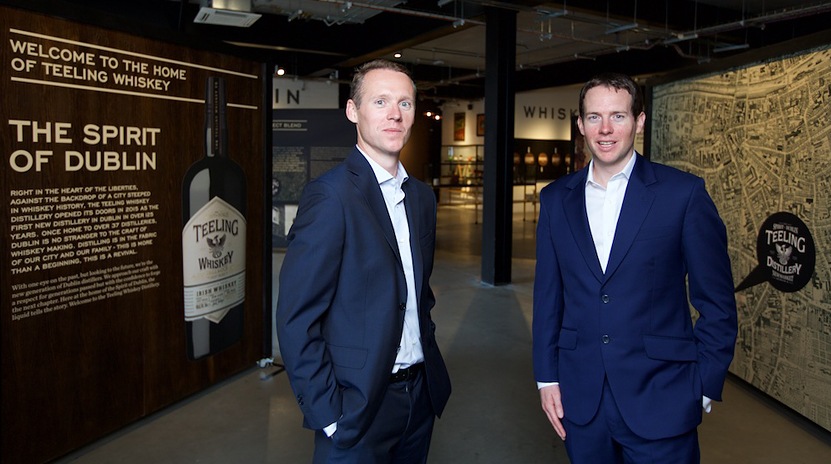
The Teeling Family
Most family run businesses we think of are blue collar artisans like cobblers, contractors, and, if pop culture is to be believed, con men. We simply don’t think of brewing or distilling as family pursuits. Granted, this is all for the average person, because Stephen and Jack Teeling grew up making whiskey the same way some of us grew up fixing cars or working in restaurants.
Their father, who was a man Stephen described as a “serial entrepreneur” founded Cooley Distillery north of Dublin back in the ’80s and immersed his children in the business. Following their father’s lead, the brothers learned what made whiskey a unique business, how to start and survive in the industry, and how to deal with the struggle of going years without knowing what your product is going to be. They also learned the Irish whiskey business has the added difficulty of differentiating your brand from the ones people have been drinking for nearly three centuries. All those lessons piled on top of each other and you have two brothers gearing up to take their rightful place in the world of Irish whiskey.
Then Ireland saw its financial fortunes change for the worse. The Celtic Tiger turned into the Celtic Corpse while people’s finances started to shrivel. The Teeling family owned a majority share in the Cooley Distillery, but it wasn’t enough to stop it from being sold to replenish a bit of the shareholders’ cash stores. Jim Beam bought their distillery and the brothers were set adrift when they felt like they were just getting started.
The sale of Cooley wasn’t all bad news though. It left the two with three important resources that would help them establish their own whiskey company: a sizable supply of cash, a sizable supply of whiskey, and a literal lifetime of knowledge of the industry.
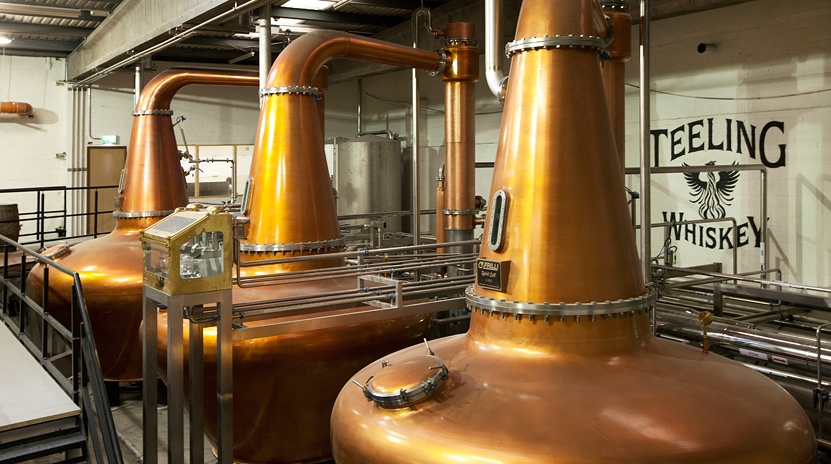
The Teeling Whiskey Company Starts to Take Shape
One of the difficulties in starting a distillery is whiskey isn’t legally whiskey until it’s been aged for three years and one day. No shortcuts, no quick tricks, just three long years of waiting to see what the hell you’ve got in that cask. It’s hard to drum up customers if all you’re selling is a promise.
But the Teelings had a pretty decent stash of whiskey from when they still owned Cooley. And since they’d been following their father’s example, differentiating their whiskey by experimenting with different casks, they had a product that was indicative of what they planned to do with their own distillery. They used the relationships they’d built in their time at Cooley to get people to agree to try their whiskey as well as build confidence in their new venture.
And they were going to need all the confidence they could get, because breaking into the modern day Irish whiskey business is like running headfirst into a brick wall. Producers like Jameson, Bushmills, and Tullamore Dew have built a pretty solid industry. But the Teelings identified one distinct advantage they had over the big guys. Large whiskey companies may have the advantage when it comes to name recognition, distribution, and a healthy dose of nostalgia, but they can’t innovate. Or at least, they face a hell of a lot of resistance when they try. No one wants Jameson to stop tasting like Jameson.
Smaller companies are more agile and able to experiment. In fact, they’re rewarded when they experiment. Teeling Whiskey has seen most of its success with younger, knowledgeable drinkers, a group that actively seeks out new beers and spirits. And we know that’s true because the overwhelming majority of beer articles on this site follow exactly that narrative.
For the same reason craft breweries can hop from IPA to IPA, messing with all kinds of established formulas, distilleries like Teeling can buck the traditional sherry casks and mature their whiskey in rum and wine casks. They get to keep all the smoothness and ease of drinking the Irish style is famous for, while also getting to inject it with the innovation it’s been lacking.
So the Teelings knew where they fit, or wanted to fit, in the grand scheme of Irish whiskey. They wanted to supply another choice of spirit in the $30-60 bracket, and one that was Irish at its base but knew that it needed to bring something new to an old industry. They had the knowledge, they had their product. Now they needed a location.
If you were to visit the Teeling Distillery, as of January 2015, you’d go to Marrowbone Lane in the Liberties in Dublin. But the location that helps set Teeling apart wasn’t even on the brothers’ radar in the beginning. The reason for this is deeply rooted in both Irish and American history, and it’s a significant part of what drew us to Teeling in the first place.
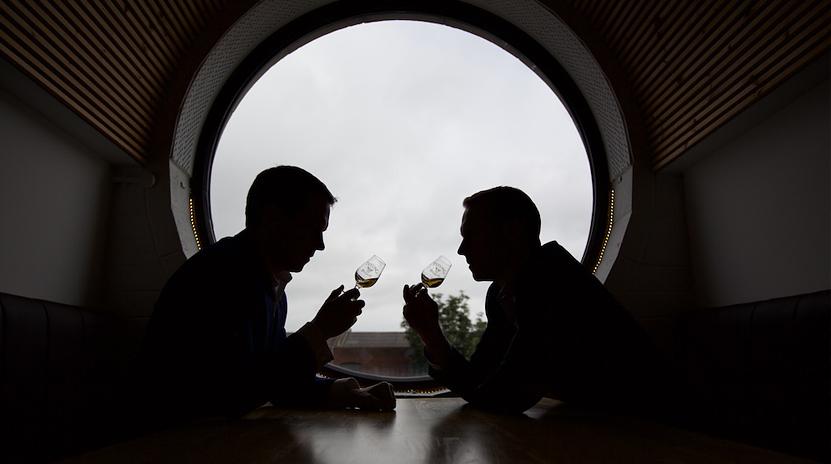
Dublin’s Decline
A century and a half ago, where Teeling is now, there were 37 separate distilleries. Dublin whiskey could be sold at a premium, around 25% more expensive than whiskeys distilled elsewhere in Ireland. So not only was Dublin huge for Irish distilling, it was where the world’s favorite liquor was made. That’s a huge difference from what it is today, where Teeling is the first new distillery to open in city limits in 125 years and the first Dublin whiskey distilled in more than 40 years.
In fact, here’s a bit of trivia. The distinction between whisky and whiskey has its roots in the elitism of Dublin distilleries. Distillers from the Irish capital knew how valuable their spirit was and wanted a way to distinguish themselves from the imitators. The way they did this was adding an “e,” so while whiskey vs. whisky now means Irish and American vs. Canadian and Scottish, it used to mean Dublin vs. everyone else.
Dublin’s decline was a perfect conspiratorial storm. We’ve talked about it before, but let’s have a review. As you may or may not know, Ireland and England have a bit of a history. Anglican influence in Ireland started in roughly the 12th century and it remains today in the form of Northern Ireland, albeit with a relatively solid peace and an open border. The time we want to concern ourselves with is a century ago, with the Easter Rising, and the subsequent fight for Irish independence, and the formation of the Irish Republic.
Unduly restrictive legislation had been enacted on Ireland before, and this time was no different. During Ireland’s fight for its independence, the English imposed harsh exportation restrictions on the island, essentially making it impossible for them to export any Irish-made products. This meant, for a time, Irish whiskey wasn’t getting off the island.
This created an opportunity for the Scottish to jump in on the action. Scotch, prior to this, was a relatively unknown product, its popularity mostly limited to Scotland. But with Irish whiskey out of the way, Scotland was able to turn itself into a globally recognized brand, a reputation that extends to today. Irish whiskeys of all sizes are attempting to reverse this, or at least restore a bit of their global renown.
After the exportation restrictions were loosened, America began its grand experiment in Prohibition, meaning Dublin whiskey lost one of its most significant overseas markets. Even after Prohibition’s repeal, Irish whiskeys were back in American markets, but the damage was already done. World War I was in there too, so count out people spending their disposable incomes on what little Irish whiskey got off the island.
Through the past century, Irish whiskey shifted its focus to domestic markets. While this works well for a few distillers, it’s not sustainable for all, so in the course of a few decades, Dublin went from dozens of distilleries down to none.
Now, finally, after 125 years, the number jumps back up to a proud one.

Teeling Whiskey Comes to Dublin
Teeling fully admits that Dublin was neither the first location they scouted nor the one that inspired the most confidence. The most honest way to put it is, Dublin wasn’t even an option in the very early stages of the Teeling brothers’ search for a location. What finally made Dublin viable was the same thing that saw the sale of Cooley Distillery.
In the beginning, Dublin’s property costs were prohibitively high for a new whiskey company, but when the economy took a steep dive, so did Dublin real estate prices. Prices quickly dropped from the realm of laughably insane and into “well, maybe…?”
The Teelings took to the Dublin streets, scouting different spots that might be able to house their distillery. The problem was, Dublin is an old city and while it’s exceedingly walkable and pedestrian friendly, there are fewer buildings out of which a modern distillery could ship its product. Most of the buildings they saw had great space and inspiring history, but they couldn’t accommodate modern shipping methods without some serious renovation.
When they finally found a location that fit all their needs, the Teelings then had to go to work on Fáilte Ireland, the country’s tourism board. Before Teeling could start working on their distillery in historic Dublin, the board had to sign off, saying it was in line with their mission statement. To convince the board, the Teelings leaned heavily on the history of the Liberties, citing the 37 distilleries that used to occupy the area, as well as the Guinness brewery only a few minutes walk up the road. In their eyes, and eventually in the board’s eyes, the brothers were bringing a traditional industry back to its rightful place, providing crucial jobs for Irish workers, and creating a tourist attraction unique to Dublin.
And it’s good that they got the approval. Their endeavor’s experienced more success in tourism than they or the board anticipated and the distillery’s expecting 100,000 visitors in 2016, a significant portion of which are Irish. Roughly 40% of those who visit and tour the site are Irish citizens. This estimate is part of a larger trend Teeling has seen, that of the new Irish support for independent, local businesses.

Making Irish Whiskey Palatable Again
During the Celtic Tiger, the young Irish were importing their spirits. Most of what was drunk were international brands, and if whiskey was being sold, it was Jameson and Bushmills selling to the older generations. Their drinking habits had solidified years ago, when Irish whiskey was down to only a few distilleries and was selling directly to Irish nostalgia. These were the people pining for the rare ould times, who remembered a very different Ireland.
Even today, Teeling hasn’t found success in areas with older generations of Irish and Irish-Americans. Big brands retain their loyal base in rural Ireland and old Boston, and that’s something that Teeling understands. He obviously won’t stop people from those areas from drinking his whiskey, but the company’s focus and energy has mostly been spent on educating younger drinkers on how to drink Irish whiskey.
Most of marketing for Teeling Whiskey has stressed the importance and power of word of mouth. It’s a much more grassroots approach to whiskey, where they rely on customers to bring in new customers, not as paid shills, but as people who genuinely enjoy the whiskey. Think of all the beer you’ve bought based on a friend’s recommendation and you’ve nailed exactly why Teeling is thriving.
But there’s also a reputation whiskey has to work to overcome. During our interview, Teeling recounted a whiskey show he and his brother attended early in their endeavor. During a Scotch tasting, they both noticed just how serious the attendees were. Barely anyone was speaking, there was no laughter, and the music, if there was any, didn’t even approach energetic. Somewhere along the line, Scotch whisky got a reputation like old wine, where there were objective metrics to enjoying the drink.
Teeling moves in the opposite direction. Irish whiskey should be a fun, social drink that you can enjoy with friends at a party or a lively night at the pub. To put it in Teeling’s words, “Whiskey isn’t all haggis and kilts.” That’s why a large part of their marketing stresses education. Scotch’s reputation, coupled with the reputation of the rural Irish and older Irish-Americans, can intimidate drinkers right out of experimenting with whiskey. By creating a welcoming, social atmosphere, Teeling can inaugurate new drinkers into the whiskey scene, introducing them to new cocktails, recipes, even foods incorporating their whiskey. Some Dublin chefs have taken to inventing new ways to make coffee
In line with this socially accessible education, one of their recent tasting events had them pairing their whiskeys with different songs. Their Small Batch got a spliced version of Thin Lizzy’s cover and Metallica’s cover of “Whiskey in the Jar,” while Single Grain matched with U2’s “Desire.” Single Malt honored the memory of the great Luke Kelly with “The Auld Triangle.” Their poitín, a sort of Irish moonshine, went more with pictures than it did with music, the pictures being Shane MacGowan before and after he had teeth.
In the end, Teeling Whiskey and those who drink it are people who are proud of their heritage, but not blinded by it. Teeling put it best, saying, “Enjoy the past, but judge us based on what we’re doing now.”
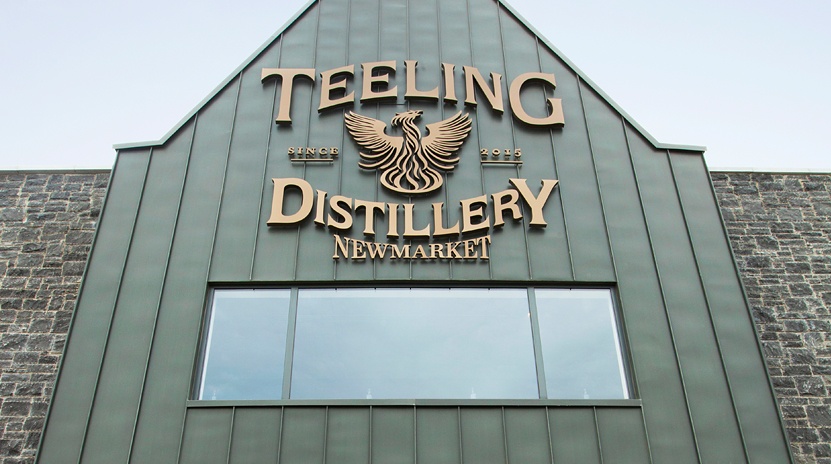
Teeling’s Future
The future looks good for Teeling. They’re making about a million liters of whiskey a year and the brothers have the experience necessary to guide them. Whiskey’s a long term investment and it’s not enough to be thinking five or ten years in the future. The consequences of their actions now might not be felt for another fifteen to twenty years, making it one of the riskier businesses to dive into.
In the US, Teeling Whiskey is selling well. It’s among the 8 to 10 countries where Teeling is experiencing above average success. Young Irish and young Americans have a lot in common when it comes to drinking habits, with both now stressing the importance of local, independent distillers and brewers over big name international brands.
But those big brands can still pose a problem for Teeling. Since they own their own distribution companies, they are able to get their product on store and bar shelves in a much larger capacity than a small company like Teeling. For Teeling, they got a lot of initial shelf space based on relationships they’d built during their time at Cooley. From there, they took about 8 trips to the US, meeting with bar and store owners and importers, selling directly to them. They were successful, but they were far from guaranteed a spot on the shelves.
For US based customers, our best bet is simply to buy their whiskey. When we’re out and we see it on the shelves, pick up a bottle or order a cocktail. If you don’t see it around your area, it couldn’t hurt to request it. Bar owners notice if they’re getting multiple requests for the same type of liquor and they’d be bad bar owners if they didn’t find a way to stock it.
And if you find yourself in Dublin, stop by the distillery. It’s literally one of a kind.

